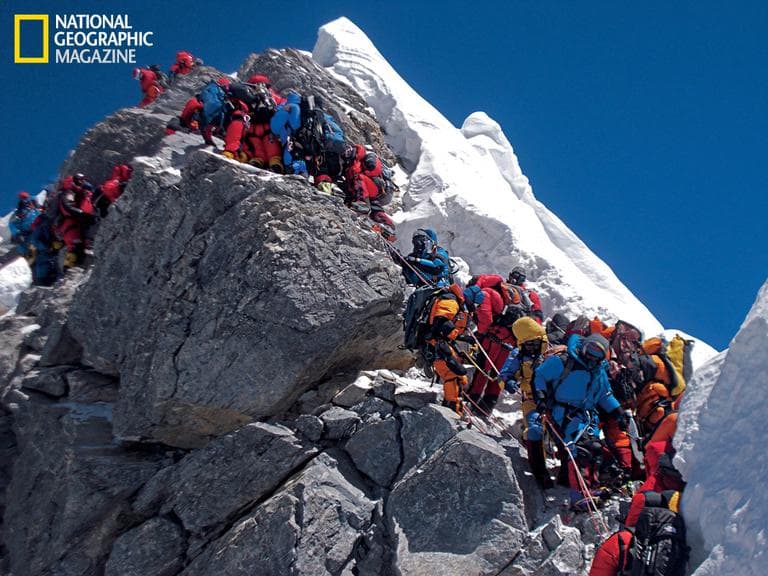Advertisement
Interview
Solving The Traffic Jams On Mount Everest
Resume
Sixty years ago this week, Sir Edmund Hillary reached the summit of Mount Everest. He and his guide were the first, but they were far from last. In 2012, 500 people made it to the top, after waiting through what can only be described as a traffic jam at the top of the world. Conrad Anker and his team for National Geographic were among them, though they might have had trouble finding a place to stand on the summit. Bill Littlefield spoke with Anker about challenges on the world's highest peak.
BL: How has overcrowding changed the experience of climbing Mount Everest?
CA: Everest sixty years ago when Tenzing and Hilary were there was a grand adventure. And since then we have many people that aren't necessarily climbers that have this desire to climb Everest. The problems are the extreme altitude and the cold, so it limits it to a very small summit window. in 2012, there was about four days this year, 2013, there was about eight days when the winds subside enough and it's not snowing, so they have to really time it correctly.
BL: By issuing far more climbing permits than can safely be accommodated, the Nepalese government is contributing to the problem. But, expeditions spent nearly $12 million in the country last spring and the government took in nearly $3 million in fees. In a country where one out of four live in poverty, I can only imagine there's pressure to allow as many climbers as possible.
CA: Yeah, there doesn't seem to be a dialogue about carrying capacity, and by measure Denali National Park they allow 1,500 climbers over the course of the season but their season runs from April through July, so it really makes a huge difference. Perhaps it's time for Everest to have a dedicated rescue team and rope-fixing team. So the people that do the rope-fixing and rescues, they're there to guide them out and there to summit the peak. If the rescue team is dedicated to fixing the rope and being there for people, it would make it a safer mountain.
BL: Even in Sir Edmund Hillary's day, climbing Everest did not sound like a pleasant experience. But, now as I'm reading about standing in line behind unskilled climbers and trudging past piles of human excrement lining the route, the experience sounds nasty as well as dangerous. What keeps you going back?
CA: Well, we talk about the negative points and particularly the article, it's a challenging place in the history of Everest. It is an incredibly beautiful mountain and that stands three thousand feet above the surrounding peaks is really unique.
Conrad Anker's 2012 Everest trek is chronicled in the current issue of National Geographic magazine and in the new book, The Call of Everest.
This segment aired on June 1, 2013.